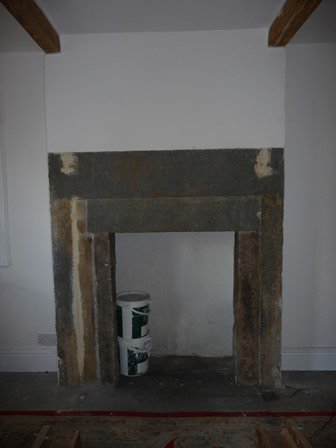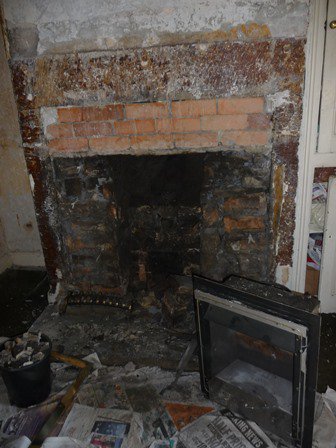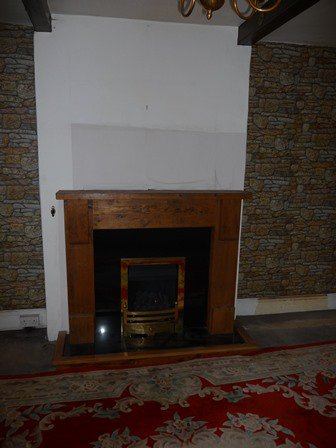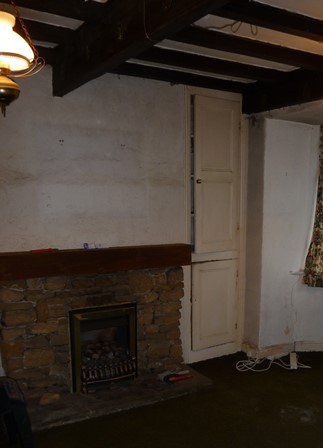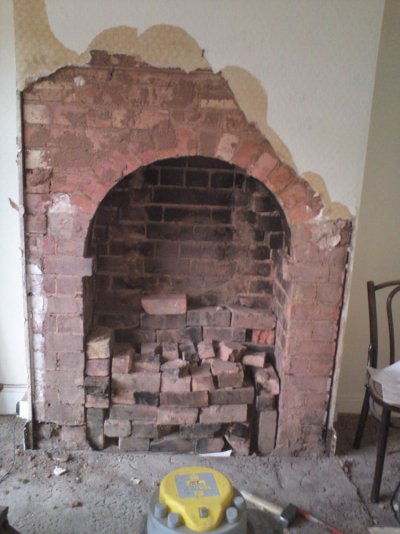Cocoa
Member
- Messages
- 49
- Location
- West Yorkshire
I am wondering how to finish the stone-work around the 2 inglenooks on my ground floor. When I got my house, they were mostly hidden behind 60's fireplaces, artex, and stone-effect wall paper (something which continues to baffle me. I have spent quite an awful lot of time trying to clean them up, but the end result is still lacking in uniformity - and I am wondering what approach I should take!
My current thinking is to limewash the stone, so at least it's all the same colour. Is there another finish that would be more traditional? In one room, after several hours with a wire brush attachment on the drill, I am left with a blue-black pigment which has leached into the stone. Might they have been finished with the same kind of thing used to black a grate? I quite like the dark contrast.
Here's a photo of one of them - this is partiularly lacking in uniformity, as the inglenook was made smaller at some point with stone that they had to hand (I suspect that they are the mullions which were removed to accomodate larger windows - I wish I had known where they were hiding when I replaced the windows!) They were pointed with exceptionally hard cement, which I chiselled out and repointed with lime - although I don't think it is any more aesthetically pleasing! The two unsightly bits at the top were where the gas lights were set some time early 1900s, my plan is to use the wooden dowls to secure a floating mantel shelf, so at least that bit will be hidden.
Any thoughts?
My current thinking is to limewash the stone, so at least it's all the same colour. Is there another finish that would be more traditional? In one room, after several hours with a wire brush attachment on the drill, I am left with a blue-black pigment which has leached into the stone. Might they have been finished with the same kind of thing used to black a grate? I quite like the dark contrast.
Here's a photo of one of them - this is partiularly lacking in uniformity, as the inglenook was made smaller at some point with stone that they had to hand (I suspect that they are the mullions which were removed to accomodate larger windows - I wish I had known where they were hiding when I replaced the windows!) They were pointed with exceptionally hard cement, which I chiselled out and repointed with lime - although I don't think it is any more aesthetically pleasing! The two unsightly bits at the top were where the gas lights were set some time early 1900s, my plan is to use the wooden dowls to secure a floating mantel shelf, so at least that bit will be hidden.
Any thoughts?

